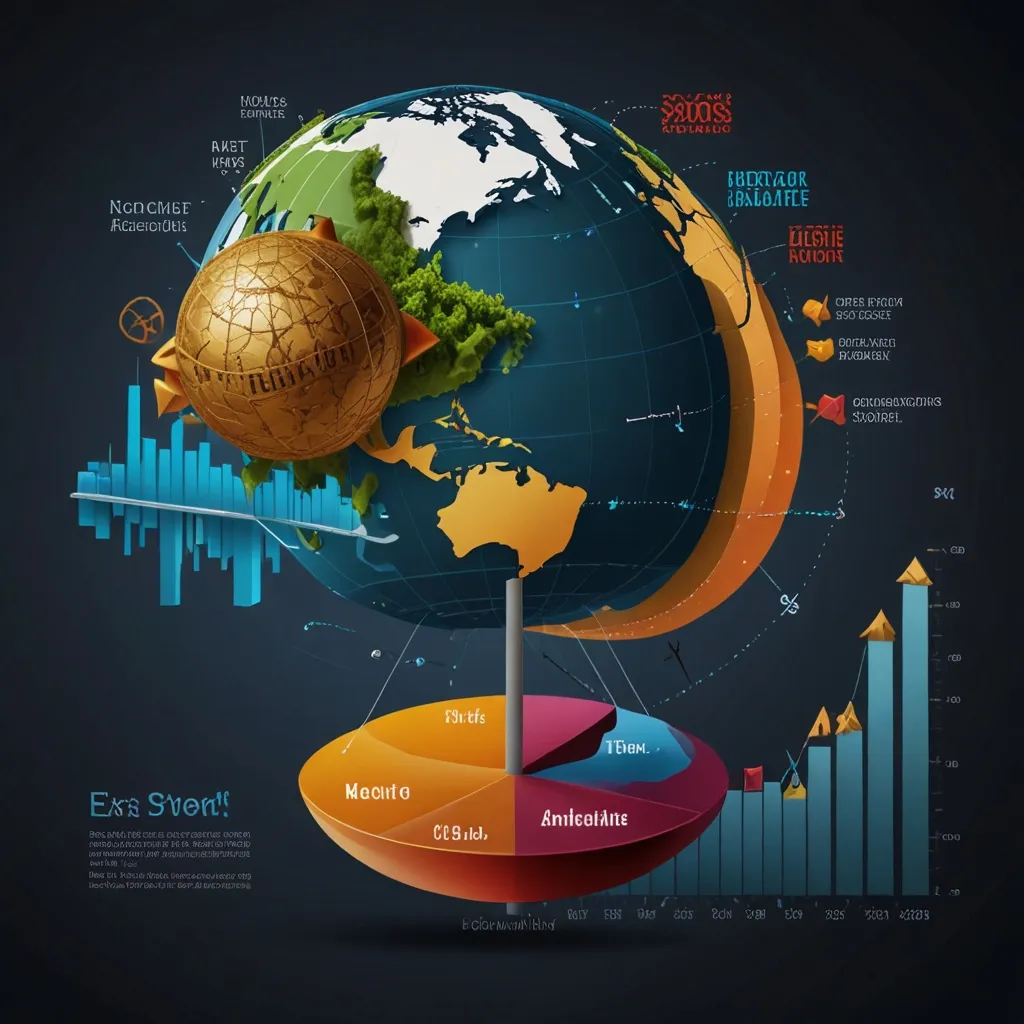When you step into the investing world, one of the first tips you’ll likely hear is to diversify your portfolio. This brings Exchange-Traded Funds (ETFs) front and center. They’ve become a go-to choice for many, thanks to their low costs and flexibility. If you’ve ever wondered why ETFs are all the rage, keep reading.
Understanding ETFs
ETFs function like a combo meal at your favorite fast-food joint. Instead of just getting fries or a burger, you get a bit of everything in one go. They are investment funds traded on stock exchanges, like individual stocks. So, when you buy an ETF, you’re essentially buying a basket of various securities in a single transaction. This provides instant diversification, spreading your risk across multiple asset types, sectors, or even geographical regions.
The Cost Perks
One of the major selling points of ETFs is their low cost. Mutual funds can hit your wallet hard with high management fees, often because they are actively managed. In contrast, most ETFs track an index like the S&P 500, which means they’re passively managed. This passive approach keeps fees down. For instance, the Vanguard Total Stock Market ETF (VTI) comes with an expense ratio of just 0.03%. To break it down, that’s $3 annually for every $10,000 invested. Not too shabby, right?
Tax Efficiency
Nobody likes taxes more than they have to, and ETFs can be a blessing in this department. Because they trade on exchanges, there’s no need to sell securities just to meet investor demands. This avoids triggering capital gains taxes, making them more tax-friendly. If you’re aiming to minimize your tax liability, ETFs like the iShares Core S&P 500 ETF (IVV) or the Vanguard S&P 500 ETF (VOO) can be real game-changers.
Diversify Like a Pro
Diversification is a fundamental strategy in investing. It’s like not putting all your Easter eggs in one basket. ETFs make this ridiculously easy. Whether you’re into large-cap stocks, small-cap companies, or even international markets, there’s an ETF for that. For a taste of global exposure, you might look into the Vanguard FTSE All-World ex-US ETF (VEU). If you have a penchant for small U.S. companies, the Vanguard Russell 2000 ETF (VTWO) is worth considering.
Flexibility to the Max
One of the adulting lessons we all learn is that life is unpredictable. The same goes for the stock market. Thankfully, ETFs are flexible little creatures. Unlike mutual funds, which trade based on their net asset value (NAV) at the end of the trading day, ETFs can be traded any time during market hours. This means you can react in real-time to market shifts. Plus, most ETFs require lower investment minimums compared to mutual funds, making them accessible to pretty much everyone.
Keeping It Transparent
Transparency in investing can feel like a breath of fresh air, and ETFs deliver on this front. Because they’re traded on exchanges, their holdings are disclosed daily. Imagine being able to see exactly what you own at any given time. This transparency helps you make informed decisions and avoid potential conflicts of interest.
Performance: What to Expect
Now, while past performance doesn’t guarantee future results, many ETFs do have solid track records. Take the Vanguard Total Stock Market ETF (VTI) as an example—over a five-year period, it delivered an annualized return of 14.3%. Similarly, IVV, by tracking the S&P 500, has churned out stable returns and serves as a benchmark for U.S. stocks.
How to Get Started with ETFs
Getting started with ETFs is straightforward. Most online brokers offer ETFs, and you can buy them just like you would buy individual stocks. To sweeten the deal, many brokers also offer commission-free trading for ETFs. Whether it’s Fidelity, Vanguard, or Schwab, purchasing popular options like VTI or IVV is a breeze.
Some Beginner-Friendly ETFs
If you’re just dipping your toes into ETFs, there are beginner-friendly options aplenty. The Vanguard S&P 500 ETF (VOO) and the iShares Core S&P 500 ETF (IVV) are fantastic choices for getting exposed to the U.S. stock market without too much hassle. If you’re after broader market exposure, look no further than VTI. These ETFs are not only low-cost but also well-diversified with a strong performance history.
Going International and Exploring Alternatives
Looking beyond the U.S.? No problem. International ETFs like the Vanguard FTSE All-World ex-US ETF (VEU) and the iShares Core MSCI Total International Stock ETF (IXUS) have got you covered. They help diversify your portfolio while spreading the risk internationally.
For those wanting to spice things up, alternative ETFs provide entry into realms like real estate, commodities, and hedge funds—areas previously challenging for retail investors to access. These can add a sprinkle of unique opportunities and further diversify your investment strategy.
Wrapping It Up
ETFs check a lot of boxes: low costs, tax efficiency, diversification, flexibility, and transparency. They’ve made themselves indispensable as a choice for many investors. Whether you’re a seasoned veteran or at the start of your investment journey, ETFs are worth considering. They offer a versatile approach to building a diversified portfolio without the heavy lifting and hefty fees. So, the next time you ponder over your investment options, give ETFs a closer look—you might find they fit your needs just perfectly.
In a nutshell, ETFs are a financial swiss-army knife for anyone looking to invest smartly. They offer a balanced mix of benefits that can help you reach your financial goals without emptying your wallet. It’s no wonder they’re becoming a fan favorite among investors. If you haven’t already, it might be time to dive into the world of ETFs.






